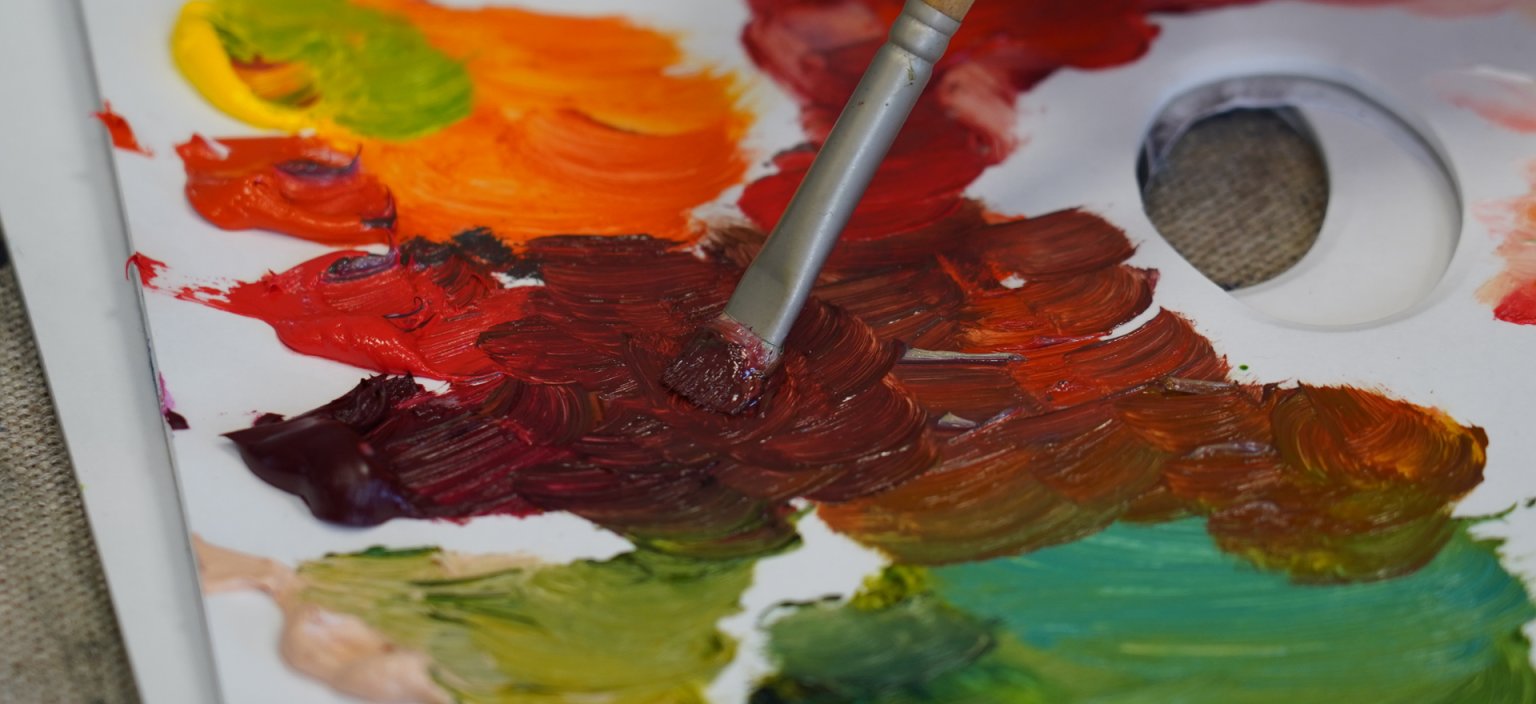
Best practice in oil mediums with artist Olivier Masmonteil
When you're painting with oil, or just starting out in this discipline, you have a lot of questions.
Painter Olivier Masmonteil guides us through the right reflexes and the use of the right mediums, the additives used to work with oil and which simply enable you to paint in oil and achieve effects
Organise the palette
You may not think about it, but placing colours on your palette makes the artist's work easier and more focused.
On the one hand, it allows you to group colours of the same shade, blues, greens with purples, yellows with oranges and reds... it's the chromatic circle. This also allows you to use one brush for each group of shades, keeping the colours as pure as possible at the beginning of the painting.
It is also essential to isolate white on your palette. Contrary to what you might think, white does not bring luminosity when mixed with the hue. It is the use of the pure shade that will give the pigments their full luminosity. Similarly, too much mixing of pigments and therefore of shades will attenuate the luminosity.
Finally, we start with darker colours and then progress to lighter ones - this is the ‘light on dark’ technique.
Fat over Lean
Typical expression of oil painting, and for good reason it is essential. Oil paint cannot be used on its own; it must be mixed with mediums to make it malleable and easy to apply to the canvas. This means that the first applications of oil paint must be light and diluted with mineral solvent, for example (the lean layer), and that only after this first pictorial layer can the fatty substance (linseed oil, for example) be incorporated.
If this rule is not observed, the top layer may dry faster than the layer underneath, causing the work to crack. Because oil paint is made up of pigments and linseed oil, it takes a long time to dry. The thin layers underneath are thin and diluted with solvent, so they will dry faster than the next successive layers.
Alkyd Medium
If you had to have just one, this is the most versatile alkyd medium.
Its creamy gel texture works perfectly with oil paints and is easy to mix. It preserves the purity of colours while offering great technical freedom. With its built-in siccative, it can be used for thin layers to start the work, as well as thick layers and even varnish effects. A real ally for today's painters!
Discover our tutorials
Learn all there is to know about oil painting and, guided by artist Olivier Masmonteil, work through each of the key stages in a mini-series of videos.
